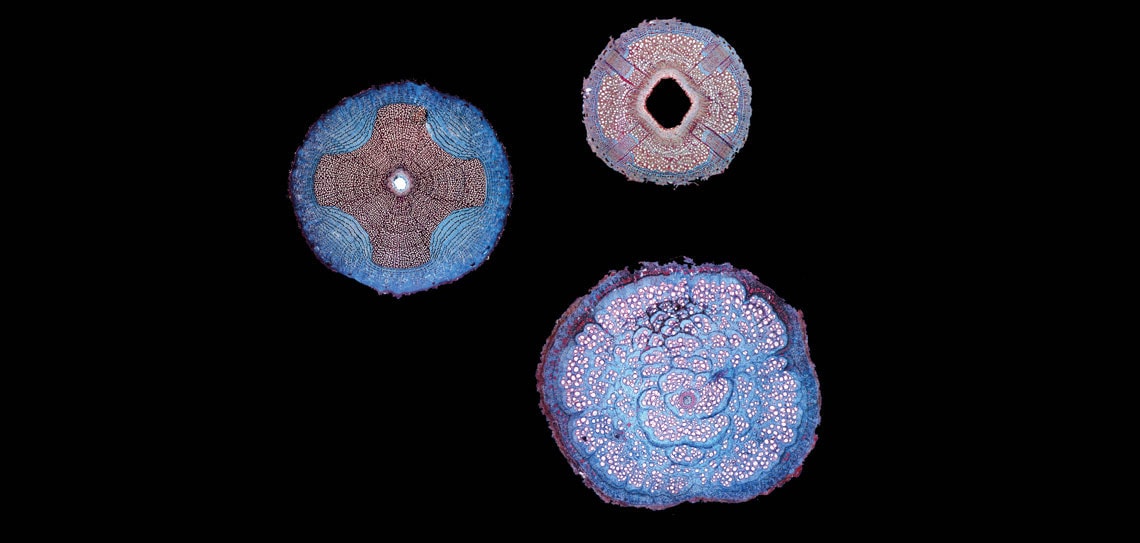Forest vines need to be flexible enough to resist being bumped into by anteaters and swung from by monkeys. The dyed stem cross-sections in the images above show the stiffer areas in red, composed of pores that water flows through, and the more flexible parts in blue, which carry the sugars produced by the leaves. The way the two tissue types are distributed varies greatly between plant types and alters their characteristics. Some are very bendy and can be cut like butter (right), while others have a cross-shaped internal structure (above and top), which guarantees flexibility. These patterns also help experts identify plant families in the absence of leaves or flowers.
Images submitted by Brazilian botanical anatomist Marcelo Rodrigo Pace, a researcher at the National Autonomous University of Mexico
Republish